Initially thought by Hitler to be a short and certain offensive, the battle for the Eastern Front was first launched with Operation Barbarossa on June 22, 1941. Hitler’s assumption stemmed from the fact that Russia was considered to have an inferior army. The early days of the attack were encouraging to the Nazi high command. The air and ground offensives saw cities in Latvia fall to German forces. But the Nazis didn’t plan for two things: the Russian winter, and the resurgence of Russia’s army.
If you’re interested in learning more about the Eastern Front, we’ve rounded up 11 books on the topic.
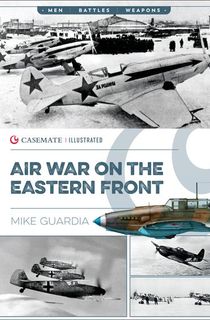
Air War on the Eastern Front
The impact that air combat had on the Second World War is undeniable. This book guides the reader through varying models of the crafts employed by both the Luftwaffe and the Red Air Force over the course of the war on the Eastern Front. Mike Guardia uses vivid photographs to acquaint you with the machinery that was either created or repurposed. Along with these images, Guardia offers the pros and cons of each craft and their subsequent iterations, as well as their battlefield successes and failures.
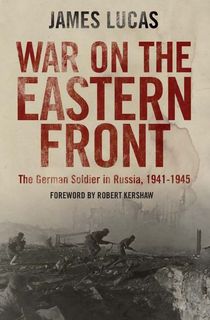
War on the Eastern Front
James Lucas’ book traces the assault on the Eastern Front, beginning with the opening moves of Operation Barbarossa in June of 1941. Having anticipated a quick end to the conflict, Hitler hadn’t taken the time to formulate a strategy for a winter offensive, leaving the German soldiers unprepared for the harsh conditions of the season. Lucas traces not only the tactics and plans drawn by either side of the conflict, but the challenges faced by the average soldier on the ground. Lucas also discusses the hurdles posed by the climate and terrain, as well as the artillery used and its efficiency.
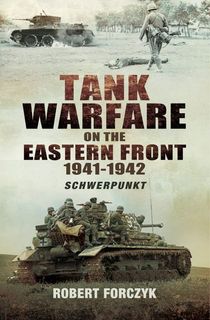
Tank Warfare on the Eastern Front, 1941–1942
If you’re particularly interested in the German panzer units over the course of the war on the Eastern Front, Robert Forczyk’s Tank Warfare on the Eastern Front is an excellent start. Focusing on 1941 and 1942, this book offers a candid battle-focused narrative, taking factors such as unit size, artillery, terrain, and weather into account. Forczyk also discusses the advantages and disadvantages of the tank units on either side. In focusing on ‘41 and ‘42, Forczyk traces the German offensive through Operation Barbarossa, Operation Typhoon, Operation Blue, and on to the defeat at Stalingrad.
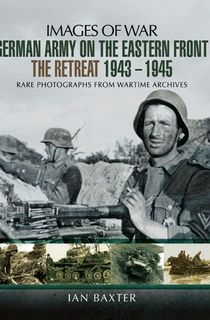
German Army on the Eastern Front: The Retreat, 1943–1945
This book is primarily a pictorial account of the final years of German involvement in Russia, with a framing narrative in each chapter. Ian Baxter’s book focuses primarily on the German artillery in use during the latter half of the war on the Eastern Front. He also includes various photos of the damage incurred by German soldiers during their retreat, the result of their scorched earth policy as they fled.
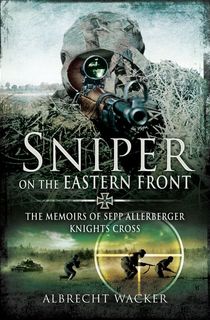
Sniper on the Eastern Front
One of the most successful snipers of the German Wehrmacht, Josep “Sepp” Allerberger served as a sniper on the Eastern Front for three years. This book discusses his training, his time as a machine gunner, and subsequently, as a sniper. This firsthand account of war on the Eastern Front offers vivid details of the German tactics, as well as the defense mounted by the Russian troops.
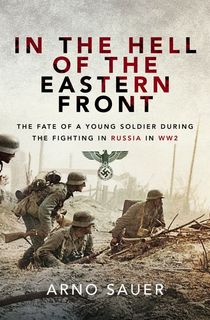
In the Hell of the Eastern Front
Arno Sauer’s book details his father’s time in the German army, offering an account of life as an infantryman posted on the Eastern Front from its earliest stages. Friedrich “Fritz” Sauer was drafted into basic training at the age of 17. His first official posting was in Crimea, before he was subsequently sent to participate in the Siege of Leningrad. His time in the army was marred by an injury and time spent recovering in Germany before being sent to the front again, aiding a tank unit. Sauer’s sole focus, as well as the focus of his fellow soldiers, was survival at any cost.
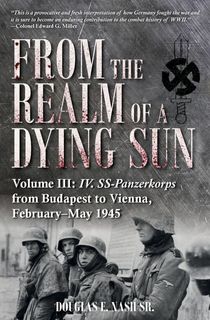
From the Realm of a Dying Sun
In this third volume tracing the action seen by the IV SS-Panzerkorps, Nash examines a critical period near the close of the Second World War. The book takes into account the creation, structure, and hierarchy of the Panzer command staff. This tank unit was assigned to the Hungarian and Austrian defenses starting in February of 1945.
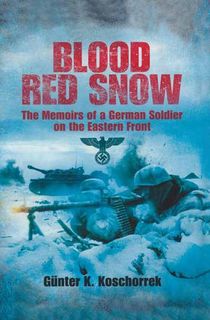
Blood Red Snow
This is a firsthand account of a German soldier’s experience on the Eastern Front, kept in real-time. Günter Koschorrek’s written recollection of his experiences was illicitly recorded, as keeping a diary was forbidden amongst the ranks. He discusses the harsh conditions German soldiers faced during the final two years of the Russian campaign, recounting the steady deterioration of German soldiers’ fortitude and morale.
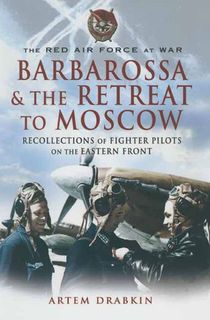
Barbarossa & the Retreat to Moscow
Artem Drabkin’s book utilizes firsthand histories from seven Soviet fighter pilots. The Luftwaffe laid waste to the majority of the Russian aircraft at the start of their assault, but those that escaped the initial bouts of battle were crucial to the resurgence of the Russian air offensive during the second half of the war on the Eastern Front. Here, those pilots recount their harrowing experiences and how they regrouped to challenge Germany.

Stalingrad: The Fateful Siege: 1942-1943
The Battle of Stalingrad is widely considered to have been a turning point in the conflict on the Eastern Front. Anthony Beevor lays out the innumerable blunders made by the German army, which led to their eventual retreat. Some claim that choosing to declare war on Russia was the first of these blunders, as even a few of Hitler’s most ardent followers had concerns regarding the efficiency of Operation Barbarossa. Beevor lays out the German offensive at Stalingrad, and how and why it turned into a Russian victory.
Available on February 6, 2023

The Wolf Children of the Eastern Front
While many books focus on the harsh conditions faced by soldiers on either side of the Eastern Front, The Wolf Children of the Eastern Front considers the impact on children in the paths of fleeing German soldiers and the pursuing Red Army in East Prussia. It’s estimated that 20,000 German children were orphaned between 1944 and 1945, losing parents to combat, disease, exhaustion, and starvation. Many of these children were forced to fend for themselves and forage for food in order to survive once they were under Russian purview. Though some were able to return to their relatives after the war, few were met with open arms.
This post is sponsored by Open Road Media. Thank you for supporting our partners, who make it possible for The Archive to continue publishing the history stories you love.


